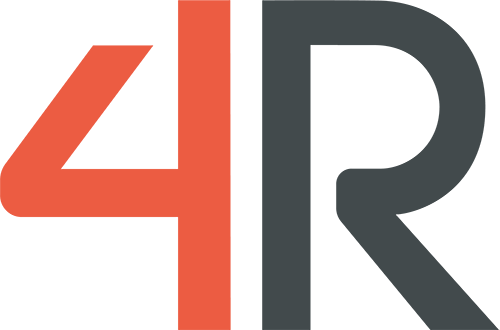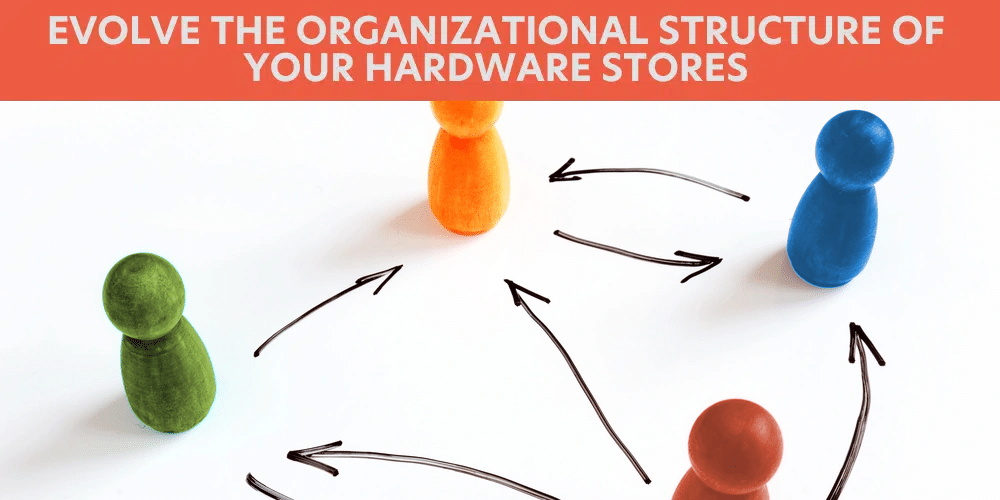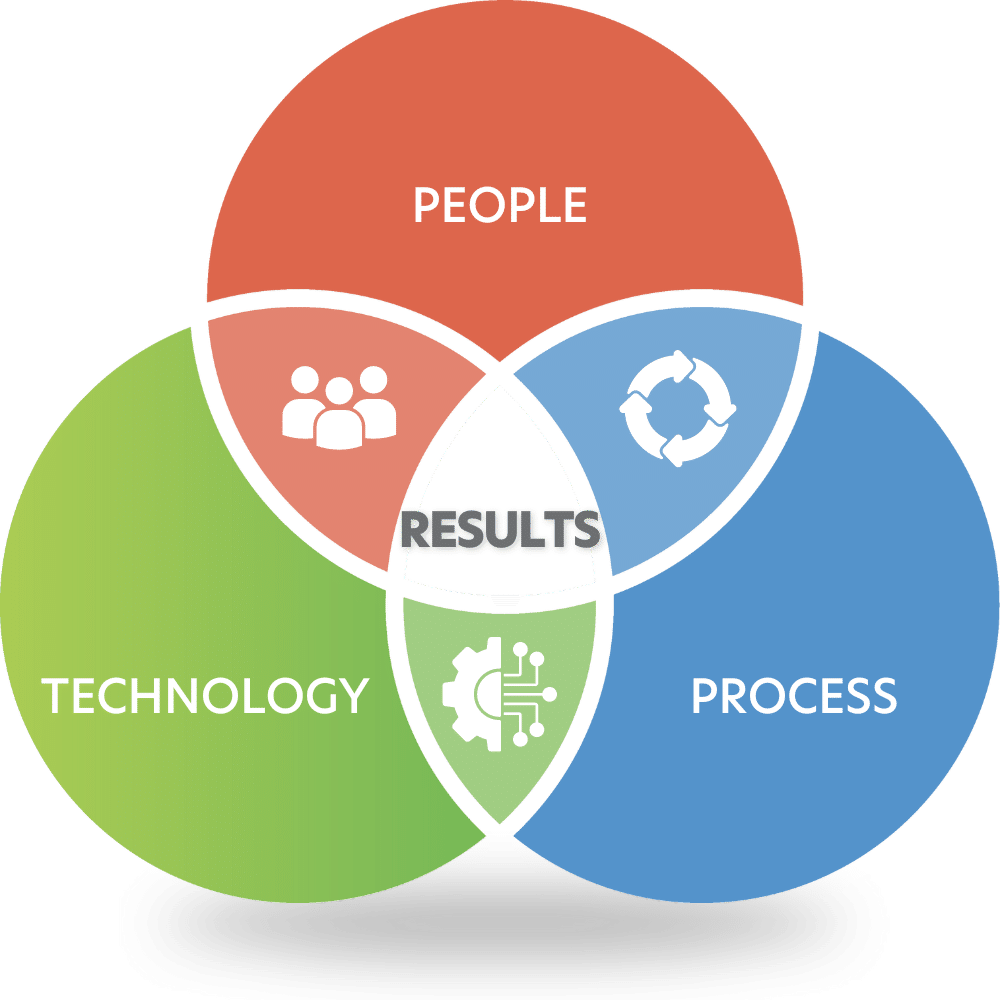Advanced inventory management technologies help companies improve collaboration, increases productivity and get the best out of their people.
Clients adopt inventory management solutions, like those offered by 4R, with the expectation of operational improvements and cost savings. Introducing new technologies to an organization impacts business processes by automating activities and providing insights.
New standardized processes in turn, impacts the employees though streamlining organizational structure and evolving jobs roles and responsibilities.
The People, Process and Technology Framework underpins successful change management. Changing one pillar affects the others.
This post focuses on how our clients have managed the organizational structural and job function changes after implementing 4R.
Key Takeaways:
- Improved efficiencies: Hardware store clients have adjusted their organizational structure to align with automated, centralized inventory management and standardized processes.
- Increased productivity: Implementing inventory management solutions enhance the job functions of category managers, buyers, store managers, and replenishment planners
- Higher customer and employee satisfaction: Automation frees up employees’ time for more strategic planning, high-value tasks and customer service
Adjust Organizational Structure to Align with Centralized Inventory Management Processes
With 4R’s guidance, after implementing inventory management solutions, our clients adjusted their org structure to to realize positive business impacts.
| CLIENT | BEFORE IMPLEMENTATION | AFTER IMPLEMENTATION | BUSINESS IMPACT |
|---|---|---|---|
| Neighborhood home improvement centers with over 20 retail locations. | PROCESS Decentralized controlInconsistent procedures and policies across the organization PEOPLE Buyers: 7 full-time employees (FTE) and 1 part-time employee (PTE) Store managers: Responsible for inventory at their individual stores | PROCESS Centralized, unified control Standardized policy and procedures PEOPLE Buyers: Eliminating the need for 2.5 buyers, reduced team to 5 FTEs Store Managers: Transitioned one manager to a purchasing role, reducing the need for a dedicated category manager |
|
| Hardware retailer with store locations in Northeast and Midwest 3 states | PEOPLE Merchandising Managers: 5 FTEs responsible for various categories: live goods, seasonal items, lumber, electrical, plumbing, and hardware. Replenishment team: 4 FTEs were needed | PEOPLE Merchandising Managers: Workload now requiring only 3 FTEs Replenishment team: 1 FTE now required for replenishment planning across the organization |
|
Shifting Job Functions from Manual, Repetitive Tasks to Higher-Value Responsibilities
Our clients realized improvements in staff productivity and employee satisfaction due to automation and actionable insights.
| JOB FUNCTION | BEFORE IMPLEMENTATION | AFTER IMPLEMENTATION |
|---|---|---|
| Buyers and Category Managers | Spent significant time on manual inventory tasks, including counting and managing stocks levels Lacked sufficient time for strategic activities such as market analysis, vendor negotiations and assortment planning |
|
| Store Managers | Were responsible for inventory management, leading to individualized procedures, inconsistent practices and inefficiencies Spent time on counting and managing inventory |
|
| Replenishment Planners | Managed purchase orders workload manually, leading to inefficiencies and errors. |
|
Analytics and Automation Helps Companies “Get the Most” of their People
Centralizing inventory management provides employees with actionable insights, supply chain visibility and automation of routine, repetitive tasks. After implementing 4R, our clients gained operational efficiency, empowered staff to focus on more strategic activities, and improved customer service.
Automation eliminates manual, repetitive, time-consuming tasks.
- Accurate forecasting and automated replenishment eliminates the time-consuming, error-prone, manual inventory counting and order placement process
- Staff can be redirected to more value-added functions such as customer service, sales and strategic planning.
Inventory accuracy enables employees to focus on the customer.
- Improved inventory accuracy ensure that popular items are always in stock. This means store managers and staff can spend less time on inventory tasks.
- Inventory planning automation frees up time to focus on customers, engaging with them, understanding their needs, and providing personalized service.
Centralized inventory management creates operational efficiencies and reduces operational costs.
- Centralized inventory management leads to more consistent and accurate stock levels across all stores.
- Predictive analytics that optimize inventory levels eliminates the need for firefighting and expediting orders.
- Automateding inventory management enables companies to potentially reduce headcount, while enabling existing staff to take on more strategic roles.
Conclusion
The three pillars – people, process, and technology – each contribute to the overall functioning of an organization and drive business results. They need to work in harmony for successful organizational changes and achieving business outcomes. Changing one, like implementing inventory management technology, impacts process and people. Working with a solutions provider with consulting and planning services will ensure smooth adoption and successful utilization of the solutions. These are the experiences, tangible benefits and business results our independent hardware retail clients have after partnering with 4R.
As the retail landscape continues to evolve, embracing advanced inventory management solutions will be key to staying competitive and thriving. Implementing 4R not only drives digital transformation, it also transforms the organizational structure and job functions. When people, process and technology work in harmony, our clients achieve improved business outcomes.
For more information on how 4R can support your business transformation, contact 4R or request a demo today!



